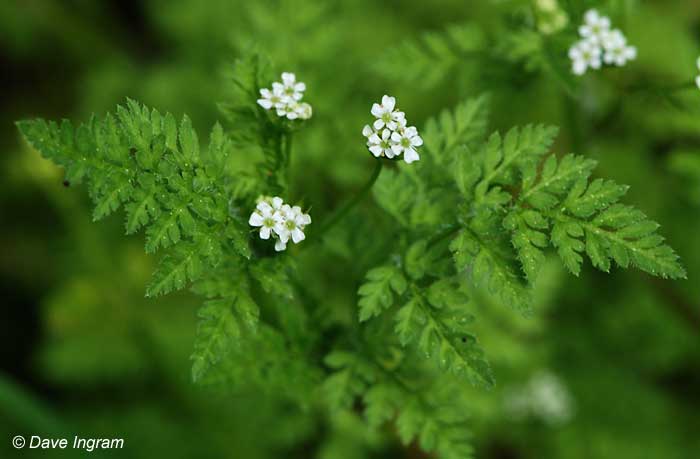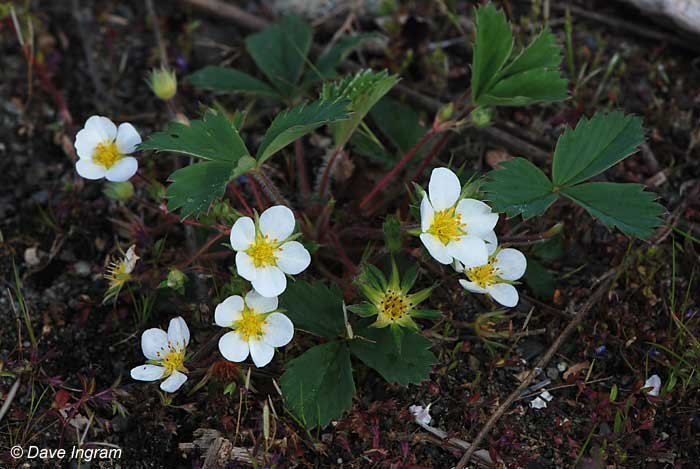Most people mention the endless stretches of sandy beach, ocean swimming and eel-grass tide pool exploration when they talk about Rathtrevor Beach Provincial Park on Vancouver Island, British Columbia. However, this 347 ha Provincial Park has much to offer the terrestrial naturalist as well.
There is no question that the rich eelgrass beds hold a treasure trove of fish and marine invertebrates for careful searchers to discover. But what to do when the tide is in? Fortunately, Rathtrevor has a wealth of interesting botanical features as well. 5.5 km of easy walking trails wind along the shoreline through old-growth coastal Douglas-fir and around the historic farmland of the Rath family homestead. For those interested in botany, these trails provide an excellent opportunity to find and photograph both native and non-native plants.
Here are a few key areas that are good starting places to begin looking for plants in the spring months of April and May:
Plants of the Play Area at Rathtrevor Beach
The large open play area has an assortment of introduced plants. Look for a number of geraniums including Dovefoot Geranium (Geranium molle), Common Stork’s Bill (Erodium circutarium) and Herb Robert (Geranium robertianum). Also growing along the edges of the fields and open areas are Purple Dead-nettle (Lamium purpureum). All of these plants are weeds from Europe and Eurasia.
Stinging Nettle at Parking Area One
Parking Area One has a large patch of Stinging Nettle (Urtica dioica) that is doing well since the introduced Himalayan Blackberry that crowded it out was removed. Stinging Nettle has lance-shaped to heart-shaped leaves that are opposite. The tiny flowers are greenish and arranged in drooping clusters. Note that the hairs on the leaves of this plant are hollow and glands at their base contain formic acid. Handling the plant can cause an irritating rash.
Flowers Along the Trail to the Rathtrevor Beach Amphitheatre
The forest edges along the side of the trail leading from the Gate House to the Amphitheatre is a good place to look for Poison-hemlock (Conium maculatum), another European import. This plant has compound umbels of small white flowers and finely dissected leaves giving it a lacy look. The leaves, roots and seeds of this plant are extremely poisonous. Also growing in this habitat is Miner’s Lettuce (Claytonia perfoliata). The large shield-shaped fused leaves below the small white flowers are distinctive and aid in identifying this plant.
The trail along the shoreline leads through open Douglas-fir. Saskatoon (Amelanchier alnifolia) grows in the open areas between the firs and flowers in the spring. Look for clusters of large white showy flowers with five petals. The leaves of this shrub are round to oval in shape and regularly toothed on the top half of the leaf.
Plants Found Along the Shore Trails

In areas along the shore where it is a little more open and grassy look for Small-flowered Woodland Star (Lithophragma parviflorum). This beautiful saxifrage has delicate white to pink flowers with deeply 3-lobed petals.
Wild Strawberry Near the Beach
Finally, the open shoreline above the beach is a good place to find Wild Strawberry (Fragaria virginiana). This strawberry has the typical white flowers and leaves with three leaflets. Note that the terminal tooth of the leaves of Wild Strawberry is shorter and narrower than the other neighbouring teeth on the leaf. Cedar “snake” fences protect much of the fragile sandy shore habitat. However, many interesting plants are visible from the public side of the fence.
Make sure to take a good plant book like Plants of Coastal British Columbia and spend some time discovering these plants and many more as you walk the trails at Rathtrevor Beach Provincial Park. During the summer, stop in at the park’s Nature House and ask a naturalist for information about what is in bloom and where.
Need to Know:
- Located in Parksville, Rathtrevor Beach Provincial Park is one of the most popular BC Parks campgrounds on Vancouver Island. With 175 drive-in and 25 walk-in sites, reservations are required during summer months.
- Parking fees are in effect for non campers. The daily rate is $3.00. Alternate free roadside parking is available at Shorewood Drive and Juniper Drive but you’ll have to walk along the forest trails to get to the main beach.
- All plants are protected in this Provincial Park – please do not remove or pick any of the flowers. Leave them there for others to enjoy.






